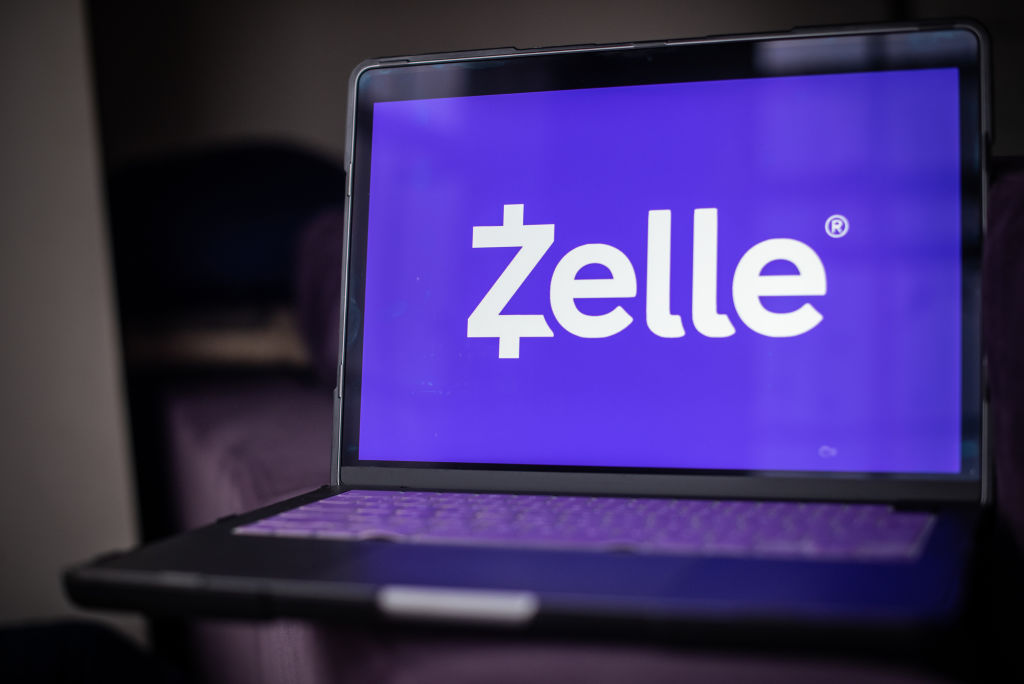5 FAQs About 529 College Savings Plans
Thanks to recent policy changes, families have more options for what to do with money sitting in tax-advantaged 529 accounts.


When a child is born, parents tend to adjust their budgets to account for diapers, baby food and child care — not necessarily for the cost of the child’s college education years down the road. But as the cost of higher education continues to rise, it’s more important than ever to start saving early and often.
Enter 529 college savings plans, which since their creation in 1996 have helped families stash away money for higher education by offering tax-free withdrawals on qualified expenses, including tuition, housing, books and meal plans. Despite the benefits that come with 529 plans, some parents hesitate to save in them: Just 30% of families use a college savings fund such as a 529 plan, according to the Education Data Initiative.
“A lot of people don’t save in 529s because they’re concerned about what happens if their kid doesn’t go to school,” says Michael Hunsberger, a certified financial planner and owner of Next Mission Financial Planning. “But there are options.”

Sign up for Kiplinger’s Free E-Newsletters
Profit and prosper with the best of expert advice on investing, taxes, retirement, personal finance and more - straight to your e-mail.
Profit and prosper with the best of expert advice - straight to your e-mail.
Many of those options come in the form of new rules around how unused 529 funds can be put to work. If you have money in a 529, but your child no longer needs it for education, you may have questions about how to use the funds as well as about the recent rule changes. Here’s what you need to know.
My child graduated from college, but we still have unused funds in her 529 plan. Can we just withdraw that money?
When you withdraw money from a 529 for a qualified educational expense, that distribution isn’t subject to taxes or penalties. But if you withdraw the money for a nonqualified expense, you face both federal income taxes and a 10% penalty on the earnings portion of the distribution. You may pay state income tax, too, depending on where you live.
There are exceptions to the 10% penalty rule, such as if the account beneficiary dies or becomes disabled. If your child receives a tax-free scholarship or grant, or if he or she gets funds through a veterans or employer-provided educational assistance program, you can also qualify for an exemption from the 10% penalty. And the penalty will be waived if the child attends a military academy.
The penalty is also avoidable in certain cases related to the American Opportunity tax credit or Lifetime Learning tax credit. If you used some of your tuition and textbook expenses to qualify for the American Opportunity credit, for example, and therefore couldn’t use those expenses for a qualified distribution from a 529 plan, you can take a nonqualified distribution and avoid the 10% tax penalty on the portion that is attributable to the tuition and textbook expenses used to justify the tax credit.
In all of these cases, you will still pay federal income tax (and possibly state income tax) on the earnings portion of the distribution. So while you can pull unused money out of a 529 account for nonqualified expenses, it’s not optimal, especially if you don’t qualify for one of the exceptions to the 10% penalty.
I have another child starting college soon. Can the money from my older child’s 529 be used for their younger sibling?
Yes. If one child doesn’t attend school or doesn’t need all of the money in his or her account, you can change the beneficiary to your other child (and there are no costs, taxes or penalties for doing so). The transfers aren’t limited to sibling-to-sibling beneficiary switches. If a parent decides to pursue a degree later in life, for instance, they can dip into their child’s unused 529 funds by becoming the beneficiary. You can also change the beneficiary to another eligible family member, such as the beneficiary’s spouse, child, cousin, niece or nephew, without tax consequences.
Another option: The Tax Cuts and Jobs Act of 2017 allows for up to $10,000 per year to go toward tuition in elementary school through high school at public, private or religious schools. But not all the states have adopted the change. Some states, such as New York and Nebraska, still consider K-12 tuition a nonqualified expense, which means residents there will likely have to pay state income tax on distributions.
I’ve heard that my child can put leftover 529 funds toward retirement savings. How does that work?
In 2022, Congress passed the law known as SECURE 2.0 Act, a wide-reaching piece of legislation that revamped much of the country’s retirement system by giving people incentives to set aside more money for their future selves. One of the significant changes SECURE 2.0 brought about is that starting this year, you can roll over funds tax- and penalty-free from a 529 account to a Roth IRA.
Roth IRAs are funded with after-tax dollars and offer tax-free withdrawals once you reach age 59½ and have owned the Roth for at least five years. That differs from the tax treatment for traditional IRAs and traditional employer-sponsored plans, such as 401(k)s. Those accounts are funded with pretax dollars, and you don’t pay taxes on the contributions until you withdraw them. A Roth IRA can give an investment portfolio necessary tax diversification.
“It’s a great opportunity,” Tony Durkan, vice president and head of 529 relationship management at Fidelity Investments, says of the rollover option. “The barrier to entry for the parents was always, ‘What happens if my child doesn’t go to school?’ In this case, those unused dollars can be transferred to a Roth, giving the child a kick-start on their retirement savings.”
The process shouldn’t be too much of a headache. You can start by calling your 529 provider or visiting its website and filling out a rollover form.
Are there limitations I should know about on Roth rollovers?
The owner of the Roth IRA has to be the same as the beneficiary listed on the 529 account. “So I’d want to make sure that the parents didn’t need that money for their own retirement,” Hunsberger says. Yes, the parents would need to pay taxes and penalties if they pulled that money out for themselves, but it could make sense depending on a family’s financial situation.
There are also restrictions on how much you can roll over. You can move $35,000 from the 529 to the Roth IRA over the beneficiary’s lifetime, but you still must adhere to the annual IRA contribution limits: $7,000 in 2024 for those younger than 50, and $8,000 for those 50 or older (for 2025, the limits are the same). That means it could take five years to fully roll over the maximum amount of $35,000. Keep in mind those annual contribution limits aren’t only for 529 rollovers — they include all contributions made to the Roth IRA in a year. You can’t roll over $7,000 from a 529, then contribute extra money from your savings.
The timing matters, too. The new rules outline that the 529 must have been opened at least 15 years before the rollover. (Durkan says the industry is awaiting IRS guidance on whether the clock resets if you switch beneficiaries. “It’s a gray area,” he says.)
You also can’t roll over money contributed within the past five years. Mark Kantrowitz, an expert on 529s and author of How to Appeal for More College Financial Aid, says it’s still uncertain whether that five-year rule applies only to contributions or to earnings as well.
“The thinking is that only the contributions need to be from at least five years ago, and any subsequent earnings on those contributions can be included in a rollover, but there is no official IRS guidance on it,” Kantrowitz says. When the agency does issue guidance, it will likely grandfather in this interpretation of the rule for anyone who already rolled over 529 funds to an IRA, he adds.
As with the rules around using 529 funds for K–12 tuition, not every state has followed in the footsteps of the federal government when it comes to allowing Roth IRA rollovers. Some states haven’t yet passed legislation to ensure that rollovers are tax-free at the state level — and some states may never do so. Be sure to check your state’s rules.
Is there anything else you can do with the unused funds?
It may seem as though putting your money into a 529 is limiting — and you should think through your family’s goals, risk tolerance and time horizon before you invest. But there are lots of options for what you can do with unused funds. Along with the possibilities above, you can also use the funds to lower your student debt. This option came about thanks to the SECURE Act of 2019, which established student loan repayment as a qualifying educational expense.
You can use up to $10,000 of 529 funds per beneficiary for student loan payments. That means that a family could use $10,000 from a 529 to pay down one child’s student loan debts and another $10,000 from the same account to pay down their sibling’s loans. But you can’t use $10,000 from one 529 and $10,000 from another to pay down student debt for one child. Check your state’s laws to see whether the distribution is subject to state income tax.
You can also let the unused funds sit in case your child (or someone else in your family) chooses to pursue a graduate degree, goes to trade school, accepts an apprenticeship or incurs other education-related expenses. Or, because of the allowances for beneficiary changes, it may make sense to leave those funds in the account for your child’s future child. Over time, the money should benefit from market growth. “Nothing stops you from continuing to contribute to the 529 plan after the student graduates,” Kantrowitz says.
Good news for generous grandparents
Before a recent rule change, distributions from a 529 college-savings account owned by anyone other than the student or parent — an aunt, uncle or grandparent, for example — were reported on the Free Application for Federal Student Aid (FAFSA) form as cash support to the student, or untaxed income. The FAFSA is used to determine how much financial aid a student is eligible for, and distributions from grandparent-owned 529s could reduce that aid by 50%. That’s a significant difference: a $5,000 reduction in aid due to a $10,000 distribution, for instance.
For the 2024-25 academic year and beyond, however, distributions from grandparent-owned 529s aren’t considered cash gifts and won’t impact federal student aid eligibility. So while your parents’ money might have affected your child’s financial aid eligibility in the past, it shouldn’t anymore.
Note: This item first appeared in Kiplinger Personal Finance Magazine, a monthly, trustworthy source of advice and guidance. Subscribe to help you make more money and keep more of the money you make here.
Related Content
Get Kiplinger Today newsletter — free
Profit and prosper with the best of Kiplinger's advice on investing, taxes, retirement, personal finance and much more. Delivered daily. Enter your email in the box and click Sign Me Up.

Mallika Mitra is an experienced business and financial journalist. In addition to Kiplinger, her work can be found in Barron's, CNBC, Bloomberg News, Bankrate, USA Today and more. She was previously the investing editor at Money where she wrote a weekly newsletter on stocks, bonds, cryptocurrencies and more.
-
 6 Stunning Waterfront Homes for Sale Around the US
6 Stunning Waterfront Homes for Sale Around the USFrom private peninsulas to lakes, bayous and beyond, Kiplinger's "Listed" series brings you another selection of dream homes for sale on the waterfront.
By Charlotte Gorbold Published
-
 Six Reasons to Disinherit Someone and How to Do It
Six Reasons to Disinherit Someone and How to Do ItWhether you're navigating a second marriage, dealing with an estranged relative or leaving your assets to charity, there are reasons to disinherit someone. Here's how.
By Donna LeValley Published
-
 How to Get Apple TV Plus for just $2.99
How to Get Apple TV Plus for just $2.99For a limited time, you can get three months of Apple TV Plus for just $2.99 per month. Here’s how to get the deal.
By Rachael Green Published
-
 Don’t Panic About the “Retail Blackout” – See Which Stores Are Closing (and Which Aren’t) for Easter 2025
Don’t Panic About the “Retail Blackout” – See Which Stores Are Closing (and Which Aren’t) for Easter 2025Dozens of major retailers are planning to close their doors on April 20. Find out which of your go-to stores are on the list.
By Rachael Green Published
-
 Home Insurance: How to Cut Costs Without Losing Coverage
Home Insurance: How to Cut Costs Without Losing CoverageNatural disasters are causing home insurance premiums to soar, but don't risk dropping your coverage completely when there are ways to keep costs down.
By Jared Elson, Investment Adviser Published
-
 Why Homeowners Insurance Has Gotten So Very Expensive
Why Homeowners Insurance Has Gotten So Very ExpensiveThe home insurance industry is seeing more frequent and bigger claims because of weather, wildfires and other natural disasters.
By Karl Susman, CPCU, LUTCF, CIC, CSFP, CFS, CPIA, AAI-M, PLCS Published
-
 Zelle App Shut Down? Why Zelle Has Discontinued Its App
Zelle App Shut Down? Why Zelle Has Discontinued Its AppWith the Zelle app shut down, learn how you can still use Zelle and which other mobile payment apps you might want to consider.
By Paige Cerulli Published
-
 Use This 1-Year CD if You’ll Owe Taxes Next Year
Use This 1-Year CD if You’ll Owe Taxes Next YearA one-year CD allows you to set money aside now for taxes you'll owe next year. We'll show our best choice.
By Sean Jackson Published
-
 How to Lower Home Insurance Rates When Climate Change Increases Costs
How to Lower Home Insurance Rates When Climate Change Increases CostsA top insurer warns the damage climate change causes is making it cost-prohibitive for insurers in some areas. Learn how to protect your home and lower costs.
By Sean Jackson Published
-
 Stick to the Plan: Don't Panic During Economic Uncertainty
Stick to the Plan: Don't Panic During Economic UncertaintyTake a breath and step back. Focus on a solid fiscal foundation to stabilize your investments during stock market volatility.
By Eric Lahaie, CFS®, RICP® Published